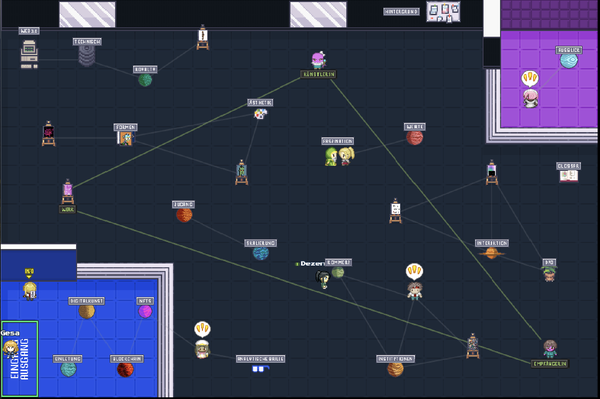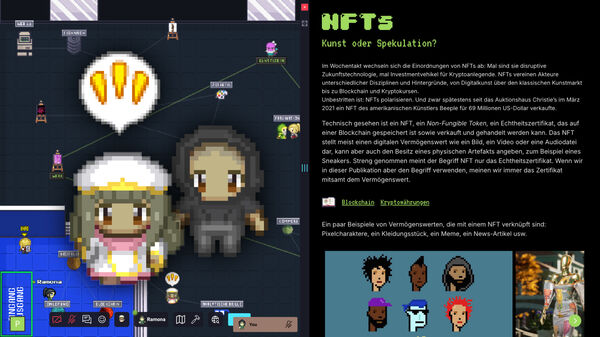NFTs in the Art World - a Discourse Analysis
The interactive publication ‘Proof of Culture’ is dedicated to the discourse surrounding NFTs in the art world. It brings together 14 voices from the fields of art and blockchain and categorises them. At this point, NFTs serve as an example of the heated discussions on the assessment of so-called ‘emerging technologies’: New technologies that promise to significantly improve existing processes.
Between Art and Speculation
The categorisation of NFTs changes on a weekly basis: sometimes they are disruptive future technology, sometimes investment vehicles for crypto investors. NFTs bring together players from different disciplines and backgrounds, from digital art and the traditional art market to blockchain and cryptocurrencies.
One thing is undisputed: NFTs polarise. At least since Christie's auction house sold an NFT by the American artist Beeple for 69 million US dollars in March 2021.
Technically speaking, an NFT, a non-fungible token, is a certificate of authenticity that is stored on a blockchain and can be sold and traded. The NFT usually represents a digital asset such as an image, video or audio file, but can also indicate ownership of a physical artefact, such as a sneaker. Strictly speaking, the term NFT only refers to the certificate of authenticity. However, when we use the term in this publication, we always mean the certificate together with the asset. A few examples of assets that could be linked to an NFT: Pixel characters, an item of clothing, a meme, a news article, etc.
A Discourse Analysis
For the publication ‘Proof of Culture’, we spoke to 14 people from the art and blockchain scene to map the discourse on the potential and dangers of NFTs. Elementary in technology assessment is not only an understanding of the technology, but also an understanding of the environment in which the technology is located and how this environment is and can be influenced by human actions.
We visualise the field of investigation as an interaction between the creator, the work and the recipients. By recipients we mean the lay public, (established) cultural institutions and galleries. Our research question was: How do NFTs change the relationships between works, artists and recipients? We investigated this question and presented the results in an immersive and multimedia format.

The Publication as an Online Adventure
Digital publications open up new possibilities compared to printed publications. In order to depict a discourse and link different strands of discussion and areas of tension, it makes sense to work with a 2-dimensional space. For the publication of ‘Proof of Culture’, we chose WorkAdventure, a platform that is compliant with the EU's General Data Protection Regulation (GDPR).
The gamification of the content is exciting from a mediation perspective as well as conceptually. On the one hand, we are becoming more and more accustomed to consuming content interactively. The approach of presenting an entire study in this form instead of as continuous text is an experimental form of science communication and an attempt to reach other target groups. On the other hand, the gaming and pixel aesthetics are conceptually close to NFT culture. The CryptoPunks, still one of the most successful NFT drops, looks very similar to WorkAdventure's avatar. This allows visitors to approach the aesthetics through the medium.
The publication is an invitation to an interactive discovery walk! With a specially created pixel avatar, visitors can move freely around the space and explore whatever interests them in any order. Anyone who wants to can give the platform access to a camera and microphone to communicate with other people.
The publication is also available as PDF as usual.
To the Interactive Publication



